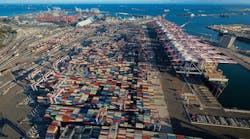Manufacturing Industry Group Says Supply Chain Issues Will Continue in 3Q
The National Association of Manufacturers released its Manufacturers’ Outlook Survey for the third quarter of 2022, which shows mixed results around a challenging economic environment, inflation, supply chains and the workforce. The NAM conducted the survey Aug. 16–30, 2022.
“Three out of four manufacturers still have a positive outlook for their businesses, but optimism has certainly declined," said NAM CEO Jay Timmons, in a statement. "The majority of respondents are expecting a recession this year or next, and it’s clear the challenging environment is taking its toll. Manufacturers have shown incredible resilience through multiple crises, but the challenges of inflation, supply chain strains and the workforce shortage are taking a toll.”
Due to the consistent economic headwinds, manufacturers’ confidence has declined, with 75.6% of respondents having a positive outlook for their company, the lowest since Q4 2020.
Key Findings of the report include:
- 78.3% of manufacturing leaders listed supply chain disruptions as a primary business challenge with only 10.8% believing improvement will occur by the end of the year.
- Attracting and retaining a quality workforce (76.1%), increased raw material costs (76.1%) and transportation and logistics costs (65.9%) were not far behind supply chain challenges as the biggest problems faced by manufacturers.
- More than three-quarters of manufacturers felt that rising material costs were a top business challenge (tied with workforce challenges and slightly below supply chain worries), and 40.4% said that inflationary pressures were worse today than six months ago. In addition, 53.7% noting that higher prices were making it harder to compete and remain profitable.
- The top sources of inflation were increased raw material prices (95.2%), freight and transportation costs (85.4%), wages and salaries (81.7%), energy costs (54.4%) and health care and other benefits costs (49.0%), with 21% also citing the war in Ukraine and global instability.
- When asked about what aspects of the CHIPS and Science Act were most important for supporting manufacturing activity, 69.6% of respondents cited strengthening U.S. leadership in energy innovation and competitiveness.
